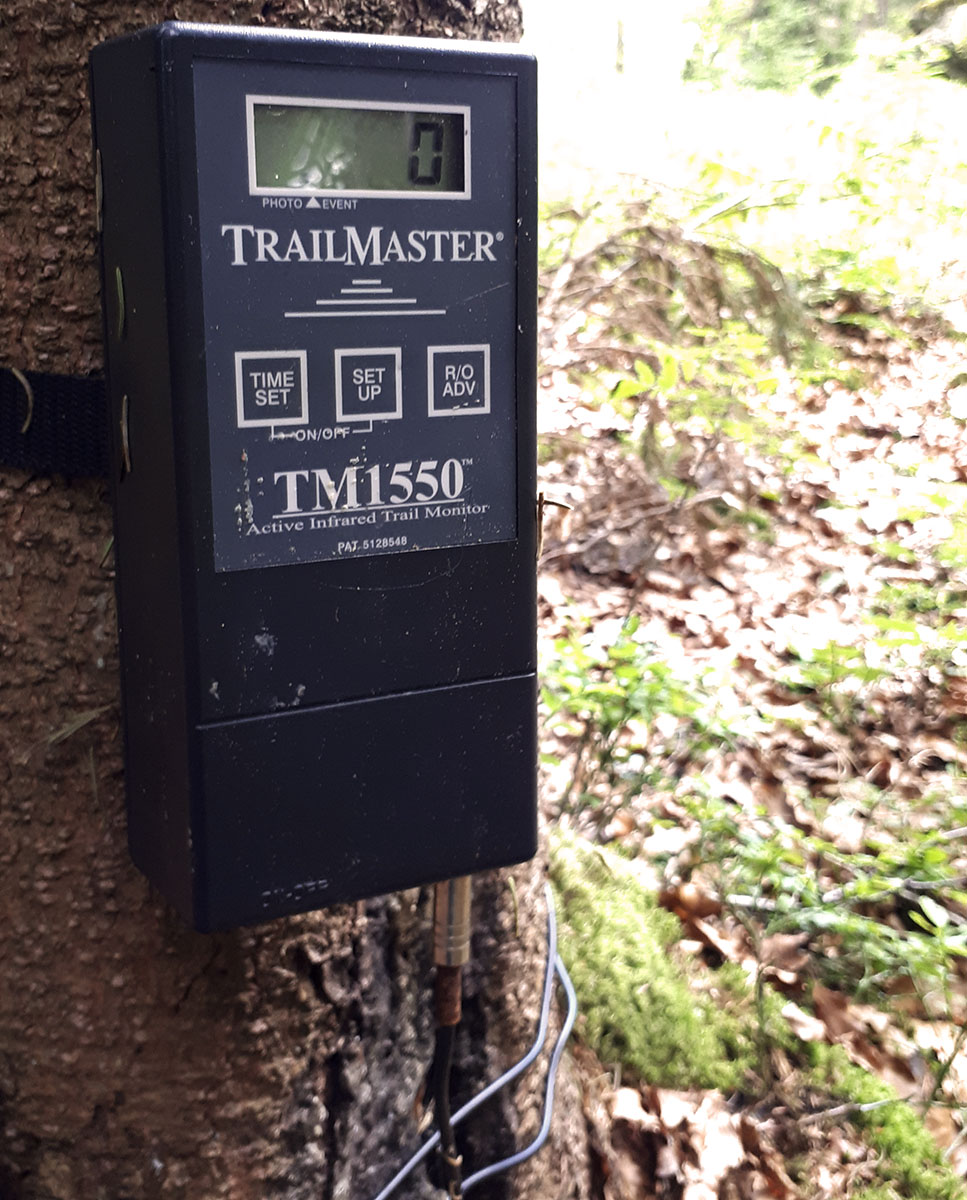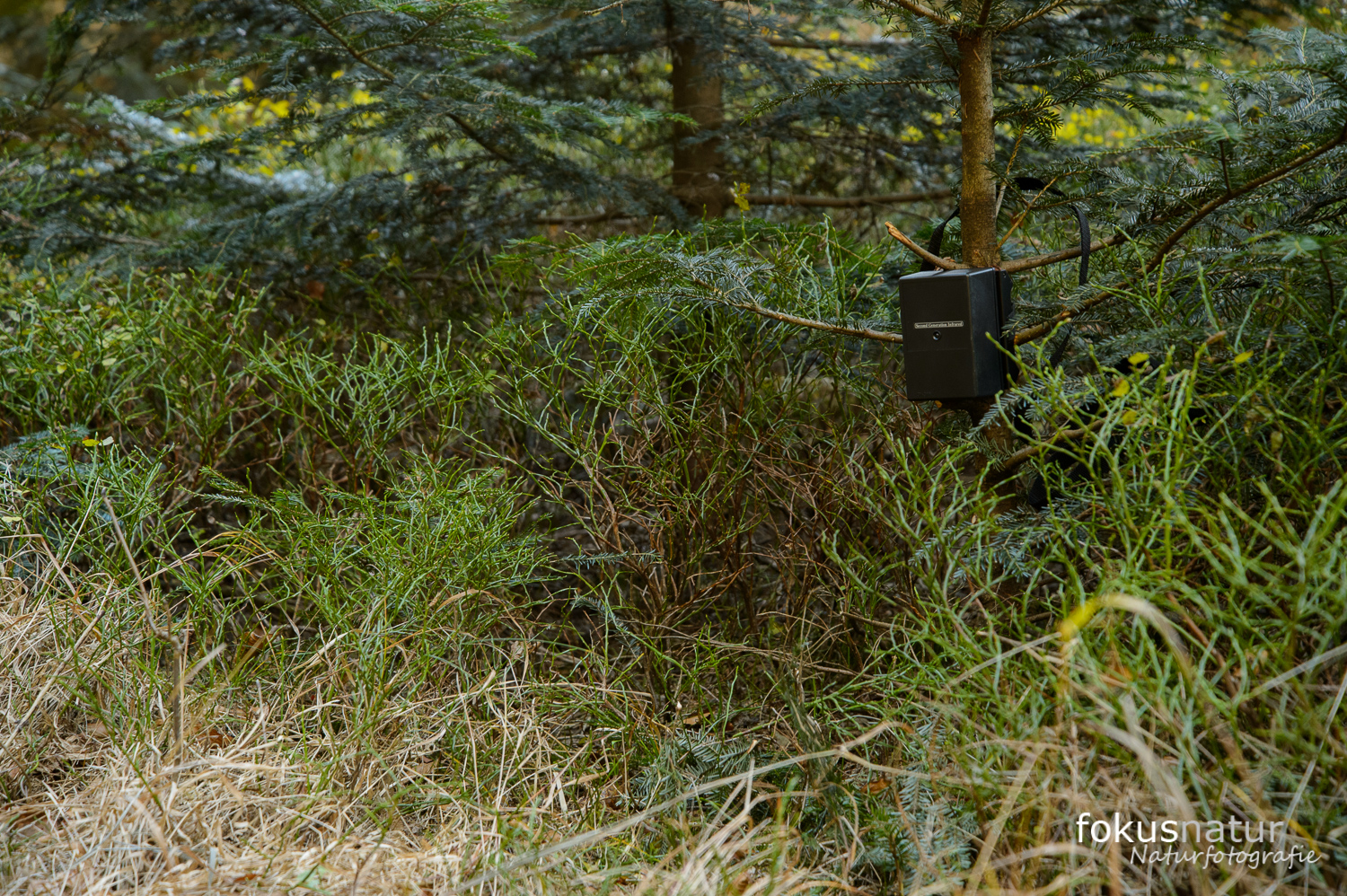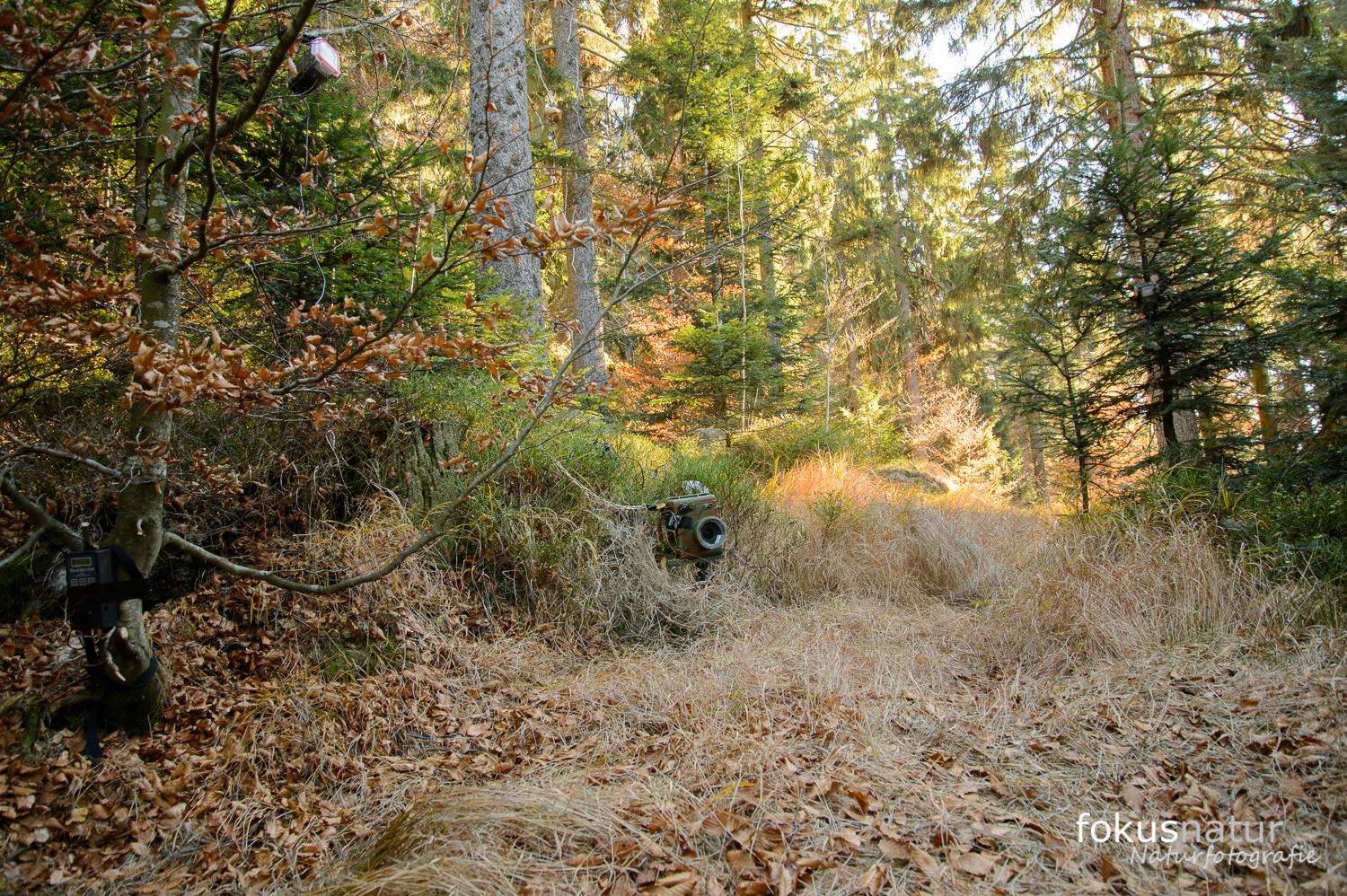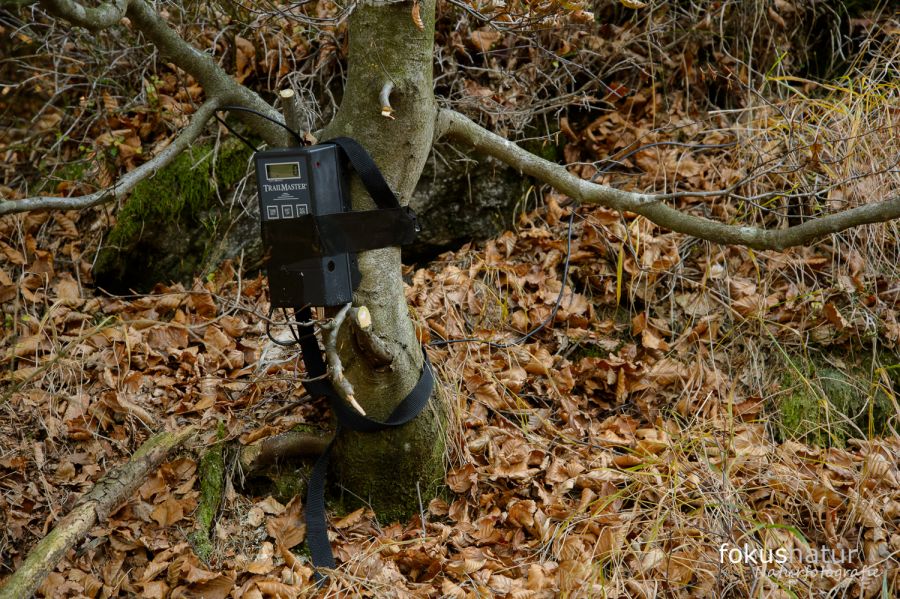
Quickly after I started with cameratrap photography and gave up with building my own triggers, I ordered two Trailmaster TM1550 infrared trail monitors directly in the US. Light barriers make sense, when you want to take a photo with the animal exactly in the right place for the photo. Motion sensors are the wrong tool then.
Find out more about the right sensor here: Sensor for DSLR Cameratraps.
Coming back to the trailmaster: this trigger is a light beam, where a pulsed infrared beam from the transmitter meets the diode in the receiver. If the beam is interrupted (by an animal) the camera will take a photo. Easy, just think about a twine between the both modules and the camera will trigger, if the twine is teared.
It'S good practice to place the beam just around the height of the head of the target species, so that the camera will trigger, when the head is still in the focal plane. This works most of the time.It becomes dangerous, when the legs trigger: the hind legs are generally known to be behind the front legs - and if the hind leg triggers the head will be too close at the camera to be sharp.

The sensitivity can be set to be sure that falling leave or snow will not trigger. For rain or snow the trailmaster is not very sensitive, in comparison to i.e. the eltima jokie, which I only use when travelling.
The trailmaster receiver can be placed up to 12m away from the sender, so you get plenty of space to hide the big boxes behind trunks or rocks. Usually you should avoid to point the receiver directly towards east or west to make sure the low sunlight willl not interrupt the system.
You connect the camera via a 3.5mm jack. I soldered it on my own to be compatible with my 2.5mm jacks in all the housing.
I'm absolutely impressed by the battery life of the light barrier: you get up to 6 months (no joke!) out of one set of batteries! Amazing, isn't it?

The Trailmaster is also very resistant in snow and rain, I lost my boxes for 3 months under deep snow. The snow went away and the boxes still worked and triggered!










